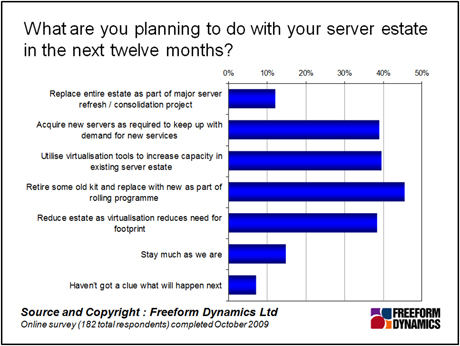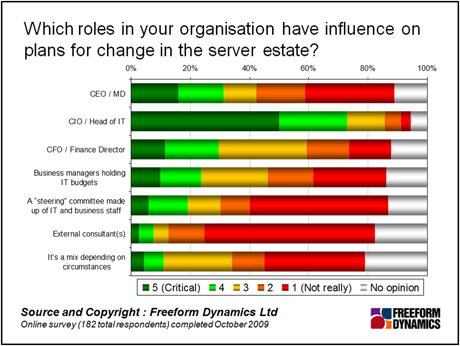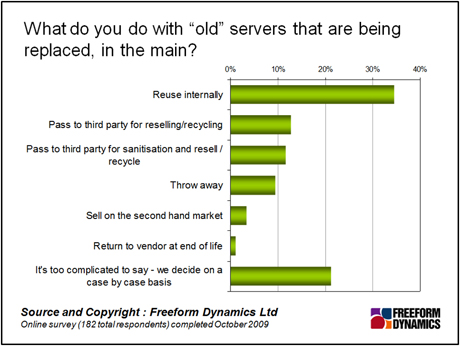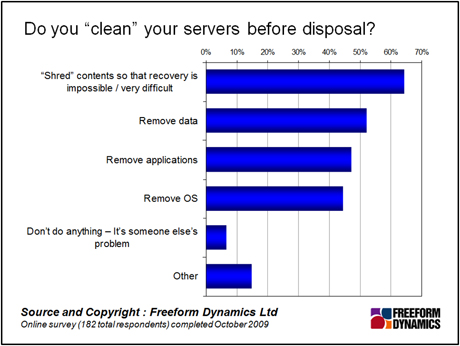We asked you a number of questions around whether you have any immediate plans to change your server estates, who influences any such changes and how you dispose of your old kit. Your answers reveal a wide range of options are under consideration.
Most popular response to the question “what are you planning to do with your server estate in the next twelve months” was that nearly half of you say that some old kit will be retired and replaced with new systems as part of an ongoing, rolling programme. In the current turbulent economic climate this is the ‘business as usual’ reply – we’ll be drilling into this in more detail in our (imminent) server report.

Two of the next three responses show just how far virtualisation has become a mainstream deployment option, whereby virtualisation tools are being used to either increase utilisation rates within the existing server infrastructure, or indeed reduce the overall size of the server estate. Meanwhile the third option, “acquire new servers as required to keep up with demands for new services”, is another indication that IT life and kit acquisition is carrying on even with pressures on budgets – but only a few organisations are planning any major refresh activities right now. The answer of “Haven’t got a clue what will happen next” is honest and does highlight that there remains a degree of volatility in the Reg audience. Amongst the “Other” answers furnished, a number of organisations mentioned looking to either offsite hosting of virtual systems, or large scale outsourcing of server services, with one taking the pragmatic approach of looking to “Intelligently outsource services that fall outside of our core competencies (i.e. email, plain web hosting).”
So, who’s involved in the decision? The Head of IT/CIO role remains the major player with the CEO/MD, CFO/Finance Directors, or indeed other business roles featuring in many fewer decisions – can we put to bed once and for all, the idea that IT spending is a business decision these days?

Some of the most interesting findings this week concerned what you do with old kit. The most favoured approach is to reuse them internally, an approach adopted by around one in three organisations. A not-insignificant proportion (20%) said it depended on circumstances, and other than internal reuse, only 10% of organisations indicated any kind of strategy for dealing with old servers.

While this demonstrates that dealing with old kit still tends to be an afterthought in many organisations, dealing with the data most certainly is not, as we can see from the final chart. The approach of ‘shredding’ server content has been adopted by over 60 percent of respondents, and the removal of data, applications and operating systems are also common steps to take.
Most importantly, fewer than ten percent have adopted the approach of doing nothing and leaving the problem for someone else to deal with. Amongst “other” options taken, the removal and destruction of hard disks was the most frequently mentioned comment.

So, no cigar perhaps on thinking strategically about disposal. But at least the lessons about data loss reported so heavily in the media over the past few years, appear to have been learned.


Have You Read This?
Generative AI Checkpoint
From Barcode Scanning to Smart Data Capture
Beyond the Barcode: Smart Data Capture
The Evolving Role of Converged Infrastructure in Modern IT
Evaluating the Potential of Hyper-Converged Storage
Kubernetes as an enterprise multi-cloud enabler
A CX perspective on the Contact Centre
Automation of SAP Master Data Management